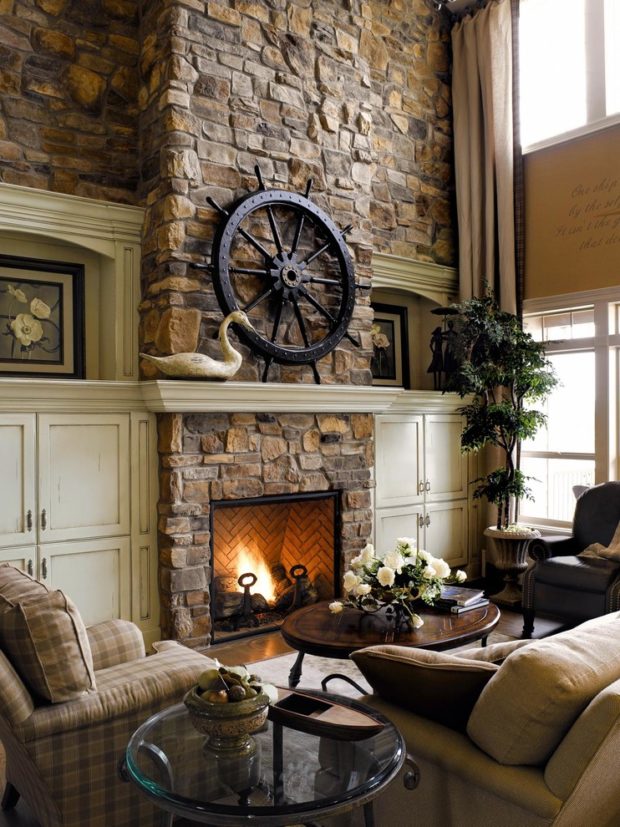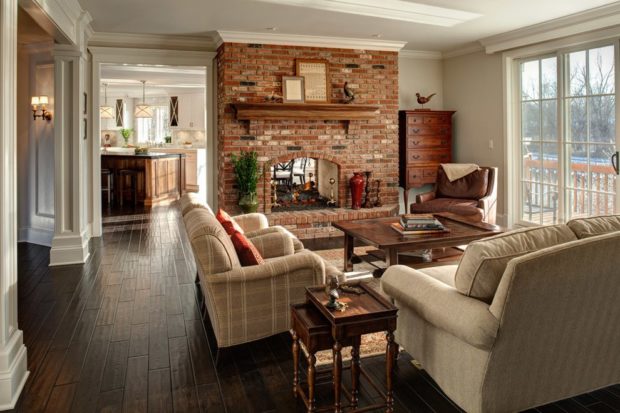If you own an old property or are thinking of investing in a period home, look out for signs of damp. This is not necessarily a cause for alarm – properties in the past were designed and built with very different methods to those we use now – as long as you understand why the problem arises and what to do about it. In fact, with over 4 million Victorian and Edwardian properties in the UK, finding damp is a fairly common occurrence.
Does your period property have a damp proof course?
In order to deal with damp issues and in terms of architectural conservation, it is worth taking a look at how damp occurs. Modern buildings use a damp proof course (DPC) inserted above ground level to stop moisture from rising up the wall. While these days chemical DPC injections would be used, older buildings might have used slate, bitumen, jute – or nothing at all.
In Georgian times (1714-1837), physical damp proof courses did not exist. Instead, ensuring good ventilation while keeping moisture to a minimum was the way to prevent damp. Many Victorian (1837-1901) homes had solid, often rendered brick walls that could cause condensation issues and allow moisture ingress if cracked. The Victorians also used timbers that could easily become damp and rotten.
Cavity walls were first introduced during late Victorian times and DPCs became mandatory in London in 1875. The cavity wall design consists of an outer, weather protective layer and an inner, dry wall that could be decorated, with the air in between acting as a moisture barrier. At around the same time, air bricks were installed into walls and under floors to allow air to circulate.
Edwardian (1901-1915) buildings used bitumen, slate or Hessian as a DPC, along with a band of engineering bricks as a moisture barrier.

How does damp get into older buildings?
If you detect signs of damp in your period property, there are several causes to be investigated.
- Condensation
If there is a temperature difference such as, for instance, on a cold solid surface such as a window or outside wall, condensation will occur. Musty smells or mould growth are giveaway signs. Good ventilation is key for prevention, and that includes suspended timber floors and not blocking up fireplaces.
- Interstitial Condensation
If warm moist air from inside the home tries to move to lower vapour pressure outside but gets trapped in the building, damp can arise. Interstitial condensation can arise inside walls, in roofs and under floors when it reaches dew point and condenses into water on the inside. Any wall insulation must have a specially calculated temperature gradient to avoid the problem.
- Penetrating damp
Moisture penetrating the building from outside can occur as a result of blocked gutters or downpipes, chimney and roof damage, failed render, structural issues and cracks. Left untreated, prolonged periods of moisture ingress can lead to
- An unwelcoming atmosphere
- Damage to furniture and furnishings
- Major structural damage to the building
- Health complications including asthma and eczema
How can you deal with damp in period buildings?
Tackling damp issues in an old building is a priority in order to preserve the structure for the long term. To find out how extensive damp is in the property in question, and for expert advice and guidance on how to remedy the situation, it is advisable to have a Damp Survey carried out by an experienced Chartered Surveyor with substantial knowledge of historic and/or listed buildings.
In addition, there are things you can do yourself to prevent the damp problem in your house from getting any worse. These include the following Do’s and Don’ts:
DO Check external ground levels in case the DPC has been bridged, and lower them if necessary.
DO Keep windows open on a regular basis, and install extra airbricks if needed. Extractor fans and condensation control units will also help to increase ventilation and reduce condensation.
DO Use traditional lime based plaster and renovating plaster instead of cement.
DO Check the DPC and renew or retrofit where required.
DON’T Use impervious materials that can trap moisture, such as cement based pointing and render. Lime mortar is porous and breathable – a much better option.
DON’T Inject chemical DPCs without professional help, or into engineering bricks or other non-absorbent bricks.




